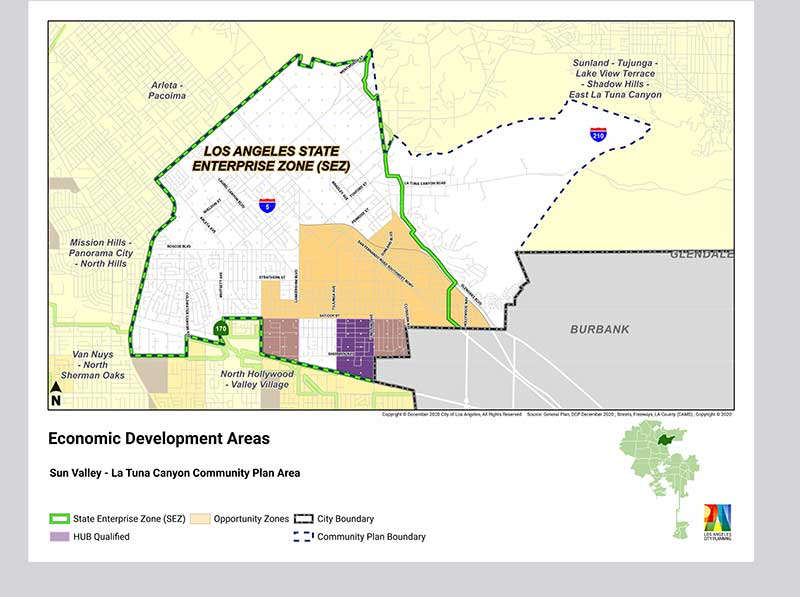An In-depth Analysis of the Los Angeles City Planning Department
Jose Mier is always looking for Sun Valley, CA information so it was serendipitous that he should find the Los Angeles City Planning Department plans for Sun Valley and La Tuna Canyon areas that lay out what the city has in store for us.
The city of Los Angeles, often regarded as the entertainment capital of the world, is a sprawling metropolis that has undergone significant transformations over the years. At the heart of shaping the city’s physical and social landscape is the Los Angeles City Planning Department (LACPD). Established to guide the development and growth of the city, the LACPD plays a crucial role in ensuring sustainable, equitable, and well-coordinated urban planning. In this comprehensive exploration, we delve into the history, functions, challenges, and future prospects of the Los Angeles City Planning Department.
Historical Background:
The roots of the Los Angeles City Planning Department can be traced back to the early 20th century when the city experienced rapid population growth and urbanization. The early lack of comprehensive planning led to challenges in infrastructure development, housing, and public spaces. To address these issues, the LACPD was formally established in 1920. Its creation marked a pivotal moment in the city’s history, reflecting the recognition of the need for organized urban planning to manage growth and development.

Functions and Responsibilities:
The Los Angeles City Planning Department is tasked with a wide range of functions and responsibilities, all aimed at fostering sustainable and livable communities. Among its primary duties are the development and implementation of the General Plan, which serves as the city’s overarching policy framework for land use and development. The General Plan encompasses elements such as housing, transportation, economic development, and environmental sustainability.
One of the critical tools in the LACPD’s arsenal is zoning regulations. Zoning plays a crucial role in determining how land is used, the density of development, and the types of structures allowed in different areas. Through zoning, the LACPD seeks to balance the competing interests of various stakeholders while maintaining the city’s overall vision for growth and development.
The LACPD also reviews and approves development projects, ensuring they align with the city’s planning goals. This involves conducting environmental impact assessments, evaluating the potential effects on communities, and engaging with the public to gather input on proposed developments.
Community Engagement:
An integral aspect of the LACPD’s work is community engagement. Recognizing the importance of involving residents and stakeholders in the decision-making process, the department employs various strategies to gather public input. Community meetings, workshops, and online platforms are utilized to ensure that diverse voices are heard, fostering a sense of inclusivity in the planning process.
Challenges and Criticisms:
Despite its crucial role, the LACPD has faced challenges and criticisms over the years. One of the persistent issues is the tension between development interests and community preservation. As the city continues to grow, striking a balance between accommodating new developments and preserving the character of existing neighborhoods remains a complex task.
Affordability and housing accessibility are also pressing concerns in Los Angeles, and the LACPD plays a central role in addressing these issues. The department has faced criticism for not doing enough to promote affordable housing and for contributing to the gentrification of certain neighborhoods.
Moreover, the bureaucratic nature of the planning process has been a point of contention. Some argue that the system is cumbersome and slow, hindering the timely approval of projects and exacerbating the housing crisis. Efforts to streamline processes and make planning more efficient have been met with mixed success.
Future Prospects:
As Los Angeles continues to evolve, the LACPD faces the challenge of adapting to new trends and emerging issues. Sustainable urban development, climate resilience, and transportation planning are expected to become even more critical in the coming years. The department must remain proactive in incorporating innovative solutions and technologies into its planning strategies.
Collaboration with other city departments, stakeholders, and the private sector will be essential for addressing complex challenges. Public-private partnerships can play a crucial role in funding and implementing large-scale projects, such as transit infrastructure and affordable housing initiatives.
Furthermore, leveraging data analytics and emerging technologies like artificial intelligence can enhance the efficiency of the planning process. Smart city initiatives that use data to optimize transportation, energy use, and public services could be explored to make Los Angeles a more livable and sustainable city.
Conclusion:
The Los Angeles City Planning Department stands as a critical player in shaping the city’s future. From its humble beginnings in the early 20th century to its current role in managing the complexities of a vast and diverse urban landscape, the LACPD has navigated challenges and contributed to the evolution of Los Angeles.
As the city continues to grow and face new challenges, the LACPD must remain agile, adaptive, and responsive to the needs of its residents. By prioritizing community engagement, addressing housing affordability, and embracing innovative planning solutions, the LACPD can play a pivotal role in ensuring that Los Angeles remains a vibrant and sustainable city for generations to come.